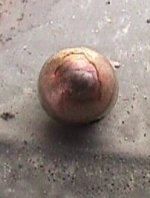Josh said:
More than ten years ago I remember hearing about radioactive freshwater pearls that would make a Geiger counter jump all over the place. It was my understanding that nuking was what made the color of those freshwater pearls look like exaggerated Tahitians. Have I been living a lie? Some one set me straight please.
Let's try to set the record straight. It sounds like you have heard a story that has an element of truth, but has been passed down too many times to remain intact.
Irradiation does exist. I say "does" very lightly, however, as it was an old practice in Japan, started in the 1960s and continued into the 70s and 80s, but never on a large scale.
The irradiation is done with gamma rays, and only changes one type of mother of pearl - freshwater. It affects the manganese which darkens the MOP. Manganese is only present in freshwater mussel shell, not marine mollusk.
So how does it darken cultured pearls?
With akoya, the bead is darkened, not the nacre. So the color change is actually the bead showing through the nacre. The nacre is still white and translucent, but appears to be dark.
This will not work with South Sea pearls, as the nacre is too thick, not Tahitian pearls for obvious reasons.
With freshwater pearls, composed solidly of mussel nacre, the nacre will darken and typically gray. The longer the gamma radiation lasts, the darker the pearls will become. This was almost exclusively a Japanese practice, however, and more or ended with the Japanese freshwater pearl industry.
There is no radiation danger from treated pearls. That part of what you heard, Josh, was an "old pearler's tale". Referring to Strack "There is no danger that the pearls themselves will emit radiation as a result of the treatment, as the radioactive base element cobalt 60 produces the stable daughter element nickel 60".


![FWP Dyed Nice Looking (1) [%P].JPG](/data/attachments/1/1587-460ee219a959252c07b1476f2faac9e9.jpg?hash=Rg7iGalZJS)